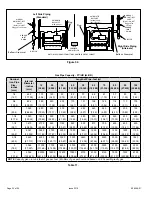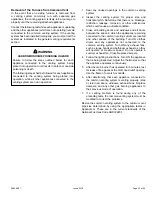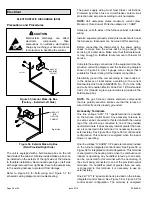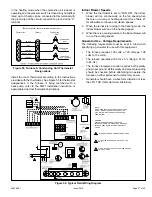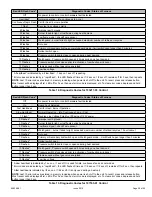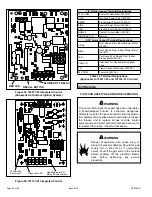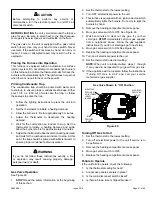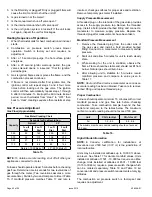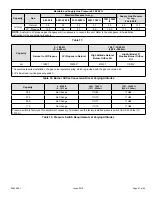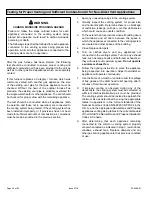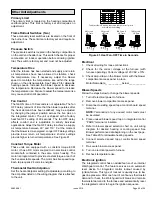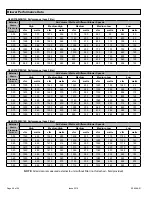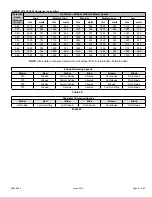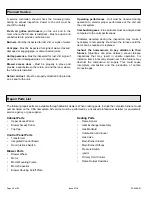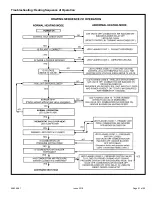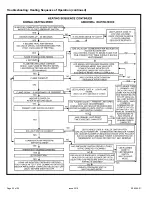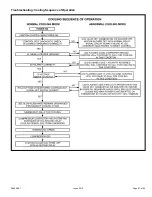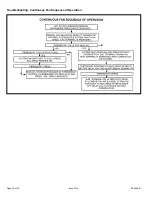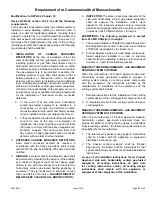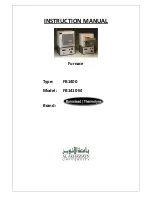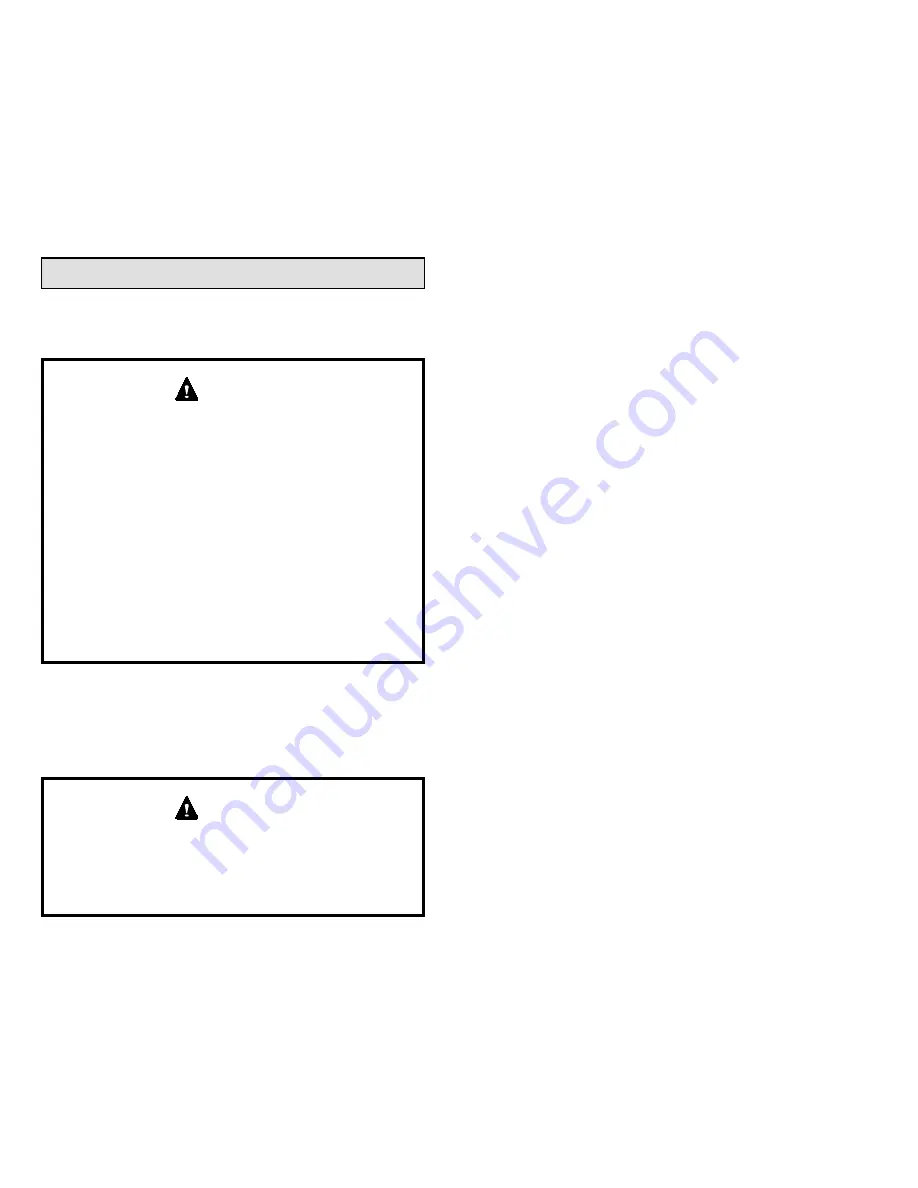
508298-01
Page 48 of 55
Issue 2219
Service
At the beginning of each heating season, system should
be checked as follows by a qualified service technician:
ELECTRICAL SHOCK, FIRE, OR EXPLOSION
HAZARD.
Failure to follow safety warnings exactly could result in
dangerous operation, serious injury, death or property
damage.
Improper servicing could result in dangerous operation,
serious injury, death, or property damage.
Before servicing, disconnect all electrical power to
furnace.
When servicing controls, label all wires prior to
disconnecting. Take care to reconnect wires correctly.
Verify proper operation after servicing.
WARNING
Blower
Check the blower wheel for debris and clean if necessary.
The blower motors are pre-lubricated for extended bearing
life. No further lubrication is needed.
The blower access panel must be securely in place
when the blower and burners are operating. Gas fumes,
which could contain carbon monoxide, can be drawn
into living space resulting in personal injury or death.
WARNING
Filters
All air filters are installed external to the unit. Filters should
be inspected monthly. Clean or replace the filters when
necessary to ensure proper furnace operation. Table 3 lists
recommended filter sizes.
Exhaust and Air Intake Pipes
Check the exhaust and air intake pipes and all connections
for tightness and to make sure there is no blockage.
NOTE:
After any heavy snow, ice or frozen fog event the
furnace vent pipes may become restricted. Always check
the vent system and remove any snow or ice that may be
obstructing the plastic intake or exhaust pipes.
Electrical
1. Check all wiring for loose connections.
2. Check for the correct voltage at the furnace (furnace
operating). Correct voltage is 120 VAC ± 10%.
3. Check amp-draw on the blower motor with the blower
compartment access panel in place.
Motor Nameplate____________ Actual____________
Winterizing and Condensate Trap Care
1. Turn off power to the furnace.
2. Have a shallow pan ready to empty condensate water.
3. Remove the clean out cap from the condensate trap
and empty water. Inspect the trap then reinstall the
clean out cap.
Cleaning Heat Exchanger
If cleaning the heat exchanger becomes necessary,
follow the below procedures and refer to Figure 1 when
disassembling unit. Use papers or protective covering in
front of furnace while removing heat exchanger assembly.
1. Turn off electrical and gas supplies to the furnace.
2. Remove the furnace access panels.
3. Disconnect the 2 wires from the gas valve.
4. Remove gas supply line connected to gas valve.
Remove gas valve/manifold assembly.
5. Remove sensor wire from sensor. Disconnect 2 pin
plug from the ignitor.
6. Disconnect wires from flame rollout switches.
7. Loosen clamps at vent elbow. Disconnect condensate
drain tubing from flue collar and remove the vent
elbow.
8. Remove four burner box screws at the vestibule panel
and remove burner box. Set burner box assembly
aside.
NOTE:
If necessary, clean burners at this time. Follow
procedures outlined in Burner Cleaning section.
9. Mark and disconnect all combustion air pressure
tubing from cold end header collector box.
10. Mark and remove wires from pressure switches.
Remove pressure switches. Keep tubing attached to
pressure switches.
11. Disconnect the plug from the combustion air inducer.
Remove two screws which secure combustion air
inducer to collector box. Remove combustion air
Exhaust and Air Intake Pipe
1. Check exhaust and air intake connections for tightness
and to make sure there is no blockage.
2. Is pressure switch closed? Obstructed exhaust pipe
will cause unit to shut off at pressure switch. Check
termination for blockages.
3.
Obstructed pipe or termination may cause rollout
switches to open. Reset manual flame rollout switches
on burner box assembly if necessary.
Summary of Contents for A96DF1E
Page 32: ...508298 01 Page 32 of 55 Issue 2219 Figure 50 Trap Drain Assembly Using 1 2 PVC or 3 4 PVC ...
Page 51: ...508298 01 Page 51 of 55 Issue 2219 Troubleshooting Heating Sequence of Operation ...
Page 52: ...508298 01 Page 52 of 55 Issue 2219 Troubleshooting Heating Sequence of Operation continued ...
Page 53: ...508298 01 Page 53 of 55 Issue 2219 Troubleshooting Cooling Sequence of Operation ...
Page 54: ...508298 01 Page 54 of 55 Issue 2219 Troubleshooting Continuous Fan Sequence of Operation ...

